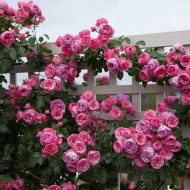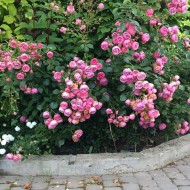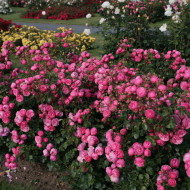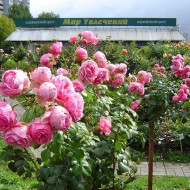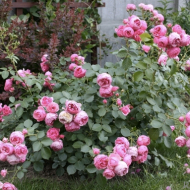Exquisite and unpretentious Pomponella rose: description and cultivation
Content
The history of the creation of the variety
In 2005, the German company W.Kordes & Sons, which is engaged in the selection and cultivation of roses, introduced a new variety of the floribunda class - Pomponella. German breeders managed to achieve a combination in one culture of exquisite appearance, unpretentiousness to conditions and resistance to many diseases.
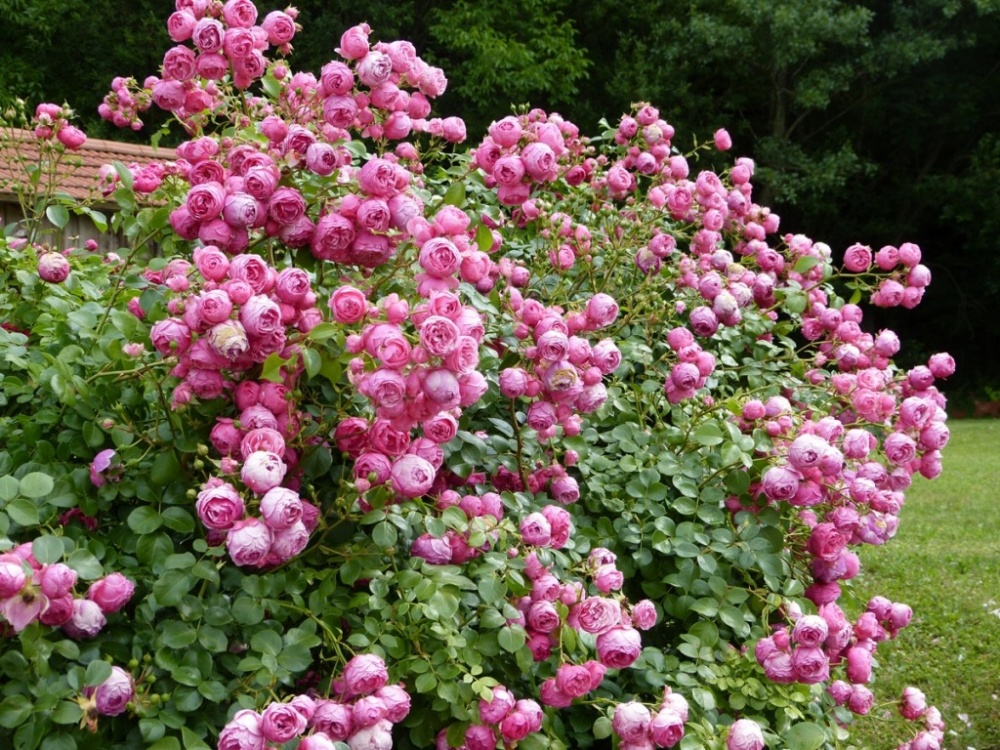
In 2006 the variety passed the certification and received the ADR quality mark. The German quality mark Allgemeine Deutsche Rosenneuheitenprufun (ADR) is awarded to resistant varieties of roses, which are characterized by abundant flowering. Pomponella is an active participant in international flower exhibitions and competitions.
There are other synonyms for the variety: Fairy Tail, Pomponella Fairy Tail and KORpompan.
Description and characteristics of the Pomponella rose
Rose Pomponella belongs to medium-sized horticultural crops. The height of an adult bush ranges from 60 to 80 cm. With a favorable microclimate, growth up to 120 cm is possible. The average crown width is about 60 cm. The shoots of the variety are erect. The rose is characterized by abundant shoots, so pruning is one of the mandatory steps in caring for the shrub.
The leaves of the variety are wide, elongated at the tips, dark green in color, with a characteristic glossy sheen. A large number of shoots and dense foliage increase the decorative effect of the shrub. However, the main attention is drawn to the buds. Pomponella rose flowers look like ball-shaped pom-poms. Apparently, this is where the name of the variety came from.
Pomponella's petals are painted in a bright dark pink color. The buds are densely double, in one flower there are about 85 petals. The shape is round, spherical, peony. The diameter of the flower in the open state is from 4 to 9 cm. Please note that the flowers are prone to fading when exposed to direct sunlight.
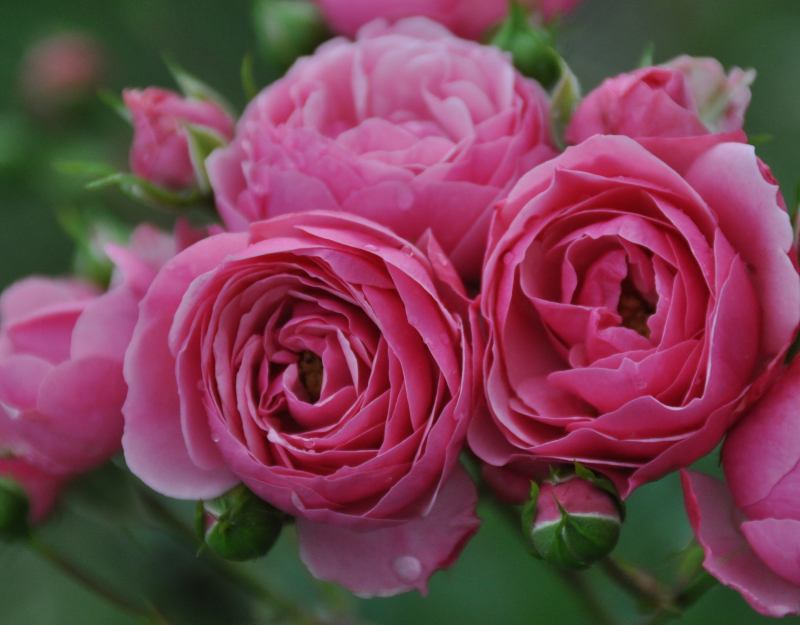
Roses are collected in inflorescences of 5-15 pieces. Several such inflorescences can form on one shoot. Since the plant has a tendency to bud formation, the branches may fall. Dropped shoots need to be reinforced with supports.
It enters the flowering period early - approximately in the last decade of May. Under favorable weather conditions and proper care, it blooms until the beginning of autumn. The variety is characterized by a delicate, unobtrusive aroma.
Pros and cons of the variety
Like all varieties of roses, Pomponella has certain advantages and disadvantages, the study of which will help in growing a crop.
- high decorative effect of the bush;
- interesting shape of buds;
- preservation of decorative qualities in cut form;
- active and long flowering;
- undemanding care;
- high resistance to diseases and pests.
- intolerance to the midday sun;
- fading of flowers under the influence of direct sunlight;
- the need to install supports with abundant bud formation.
Video "An overview of the Pomponella rose"
This video examines the varietal characteristics of the flower.
How to grow a crop correctly
Rose Pomponella is suitable for growing by novice gardeners. Highly decorative shrub is undemanding to growing conditions and care.
Drop off location and time
The success of growing a park rose depends on the place of growth. Pomponella prefers an area open to the sun. However, the midday sun burns the leaves and petals of the flower. At the same time, the plant is afraid of wind and draft. Also, landing in a low-lying area, where cold air stagnates and rainwater collects, would not be the most successful solution.
If the site is dominated by loam, you need to add organic matter. Manure and peat added to the soil increase acidity. Keep the acidity of the medium in the range from 5.5 to 6.5 pH.
It is better to plant a seedling in open ground from mid-April to mid-May. Autumn planting is possible in regions with late and warm winters. Planting work must be completed before the beginning of October.
Preparing a bush for planting
The seedlings purchased in advance are stored in a semi-dark cool room, while the root of the plant should be covered with earth. Immediately before planting, all dry and dead parts of the plant are cut off, the root processes are shortened by 1/3 of the length. Then the root of the seedling is treated with a solution of the growth biostimulator "Kornevin", "Epin" or "Heteroauxin".
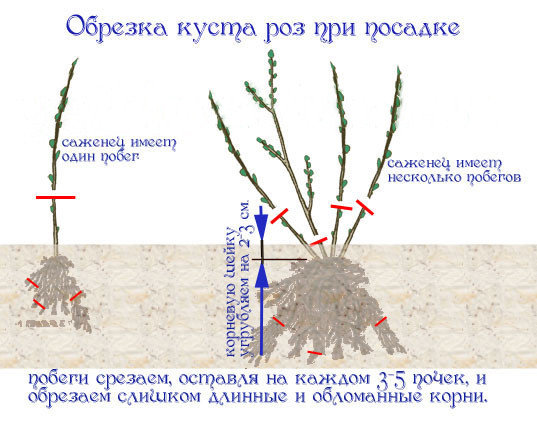
The subtleties of flower care
The drought resistance of the variety is average, the Pomponella floribunda needs frequent watering - at least 2 times a week. With frequent precipitation, the interval between waterings should be increased. Under one adult bush, pour from 15 to 20 liters of settled water at room temperature.
You need to water the rose at the root. Pomponella doesn't like sprinkling!
Pruning is a mandatory care measure. The degree of pruning - strong, moderate or strong - is determined by the condition of the bush. So, weak pruning is used to harvest faded buds, medium pruning is used to increase bud formation, and strong pruning is used to rejuvenate the plant.
In the first year, weak shoots are cut under the base. Viable branches are shortened so that 10–15 cm remains to the surface of the earth. In the second year, sanitary pruning is carried out, which involves the removal of dry, broken and non-flowering shoots. Healthy branches are cut by 15–20 cm. Starting from the third year, pruning is carried out according to the following scheme:
- dry, weak, non-flowering branches - under the base;
- annual shoots - 1/3 of the length;
- lateral - 2/3 of the length;
- central ones as needed.
The winter hardiness of the variety is above average (up to -23 ° C), therefore, the rose garden is insulated for the winter. The root part should be sprinkled abundantly with peat and dry river sand, the ground part - with fallen leaves and pine spruce branches. From above, rose bushes are covered with burlap, white polypropylene bags or agrofibre.
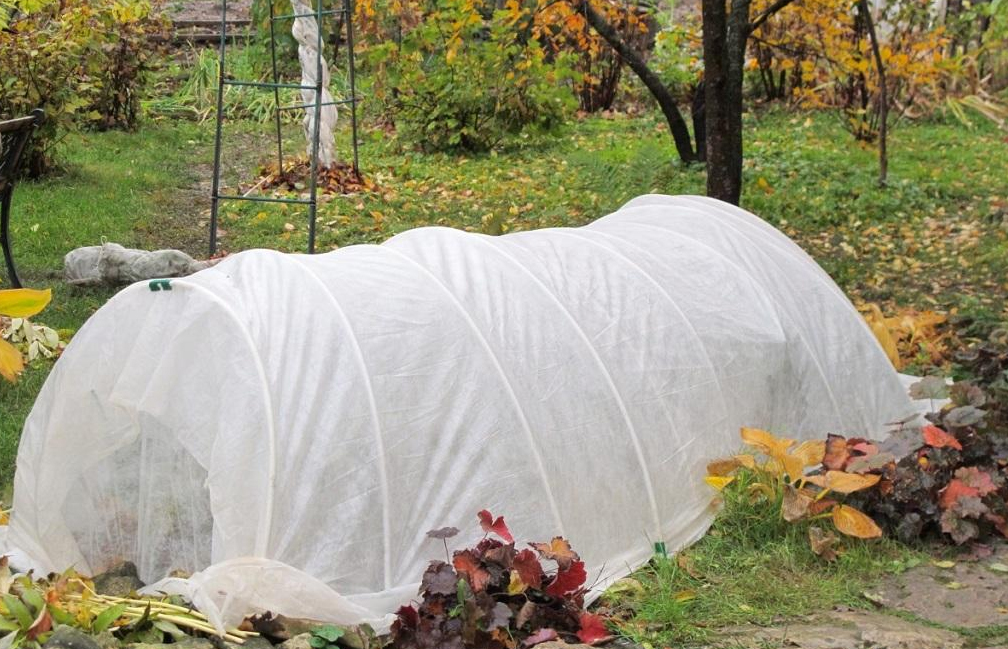
Diseases and pests of the variety
Another advantage of the Pomponella variety is its high resistance to diseases and pests. The flower practically does not attract harmful insects at all. In addition, the plant is highly resistant to black spot and fungal diseases, which often affect various varieties of roses.
Powdery mildew is the only nuisance that can arise in violation of agricultural practices. When a white bloom appears on the leaves, the shrubs are sprayed with soapy water, garlic infusion or horsetail decoction. Fungicides "Fundazol", "Magnicur Star", "Magnicur Guard", "Flint Star" and others help to resist the disease more effectively.
Pompom rose Pomponella in landscape design
Due to its spectacular appearance, Pomponella floribunda is actively used for landscape design. Nostalgic peony buds look interesting in single plantings.The rose can be grown on a trunk, and can also be used to decorate borders, garden pavilions and fences.
Pomponella looks beautiful in the company of Piano, Rosarium Uetersen, Leonardo da Vinci, Raubritter, Peter Paul Rubens, Amber Cover, Golden Border, Aspirin Rose, Bella Weiss, Ascot, etc. The flower can be used in a variety of landscape styles: from rustic country to sophisticated French garden.
- Decorating fences and fences
- Decoration of garden paths
- Rose garden
- Flower bed
- Growing on a trunk
- Solitary landing
Gardeners reviews
“A large number of roses grow in our garden, but I consider Pomponella the most undemanding to care for. With proper watering and periodic fertilizing with mineral fertilizers for ornamental flowering crops, the plant pleases with abundant and long flowering. "
“The Pomponella rose is a worthy decoration for any garden. The exquisite flower exudes a delicate aroma. Beautiful buds in the form of pompons look interesting against the background of evergreen and cereal crops. I recommend for growing. "
Park rose Pomponella combines a spectacular appearance and unpretentious care. The flower is suitable for growing both experienced and novice gardeners.

